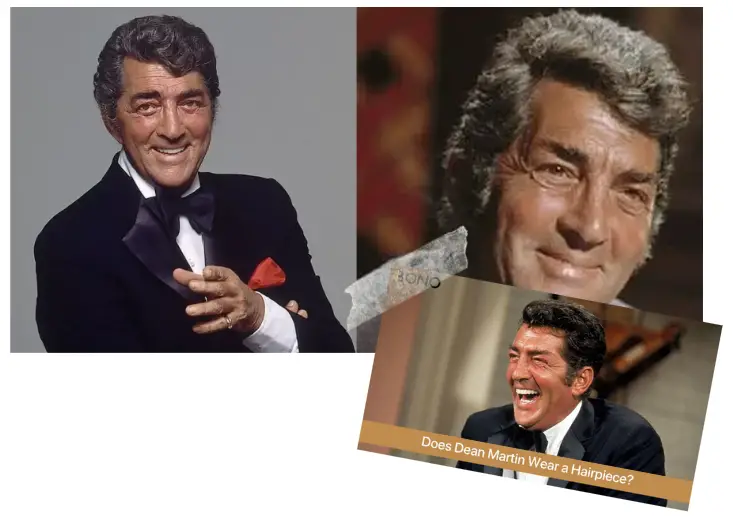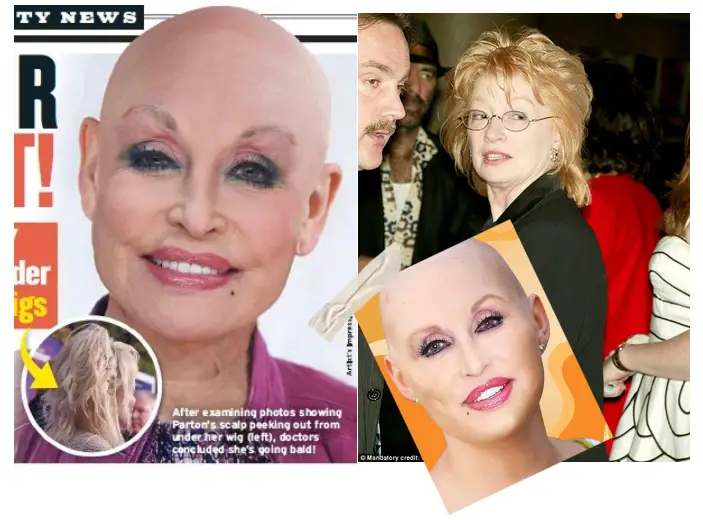Uncover the power and legacy behind Tina Turner’s wigs and discover what they look like. Dive into her style evolution with us!
Tina Turner’s mane, much like her music, is legendary. From the swingin’ sixties to today’s empowered anthems, her hair has been as dynamic and powerful as her voice. It symbolizes resilience, a testament to her journey from Nutbush City limits to global superstardom.
With over five decades in the spotlight, I bring unique insights drawn from extensive research and adoration for Tina’s style evolution that has left an indelible mark on rock and roll.
Her wigs aren’t just accessories but crowns befitting a queen of Turner’s stature. As we delve into the styles that have defined eras, remember this: each lock holds a story of triumph – stories that I am eager to unravel with you.
Ready? Let’s explore the essence behind every strand of Tina Turner’s iconic wigs!
Key Takeaways
- Tina Turner uses wigs to show her style and power. Her hair changed with her music and life.
- Her big, bold hair in the 1970s and the spikey look in 1989 are famous styles she had.
- She made some of her own wigs, dyeing and sewing them herself. People call her the “rock and roll Betsy Ross” because of this skill.
- In 1993, she started to wear natural curls. It helped others feel good about their hair, too.
- Her hairstyles have inspired many people to be themselves and try new looks. They show how to use your hair to tell who you are inside.
The iconic hairstyles of Tina Turner
Tina Turner’s iconic hairstyles represent her rebirth and evolution as a performer. Her stylist has played a significant role in creating and maintaining her signature looks.
How her hair represents her rebirth
Tina Turner’s wigs are much more than just hair. They show her a new start and change in life. Her rise to fame was brutal, but she returned stronger with a bold, blonde look that said she was taking control.
This influential style showed the world her strength and freedom.
Her change in hairstyles marked significant steps in her career and personal life. When Tina left a brutal past behind, her hair grew brighter. It was as if each new wig gave her more power to be herself on stage and off.
She became known for her voice and being brave enough to transform entirely – starting from the top!
The role of wigs in her look
Tina Turner’s wigs are crucial to her iconic look, reflecting her bold and dynamic persona. They signify her versatility as an artist and symbolize her ever-evolving style.
Each wig represents a different era in her career, from the big, voluminous hair of the 1970s to the short and sleek bob of 2008. Her wigs enhance her stage presence and contribute to shaping her larger-than-life image as a rock and roll legend, influencing fashion and beauty trends along the way.
As we delve into Tina Turner’s hairstyling journey, it becomes evident that her wigs are not merely accessories but integral components that have contributed significantly to defining her legendary status in the music industry through their transformative power.
Her stylist and the creative process
Transitioning from the role of wigs in her look, Tina Turner’s stylist played a crucial role in her iconic hairstyles. Renowned for intricate and bold wig designs, her stylist worked closely with her to create looks that embodied empowerment and confidence.
The creative process involved meticulous planning and experimentation to capture Tina Turner’s dynamic stage presence while reflecting the essence of each performance through distinctive hair transformations.
Throughout their collaboration, they continuously pushed boundaries, elevating the artistry behind each hairstyle to complement Tina Turner’s legendary performances and influence on fashion trends.
Evolution of her hairstyles through the years
Tina Turner’s hairstyles have evolved significantly throughout her career, reflecting her artistic growth and personal journey. From her signature straight tresses in 1968 to the start of her big, voluminous hair in 1979, each hairstyle marked a new phase in her life and music.
1989, she sported an iconic spikey look, followed by embracing natural curls in 1993 and rocking a short, sleek bob in 2008. These transformations represented changes in fashion and mirrored Turner’s resilience and empowerment.
Influential moments like these defined Tina Turner’s image as a rock and roll legend, impacting fashion trends and inspiring countless individuals to embrace self-expression through their hair.
Her ever-changing hairstyles continue to leave an indelible mark on the music industry and beyond, cementing her legacy as an icon.
Behind the scenes of Tina Turner’s hair
Tina Turner, often called the “rock and roll Betsy Ross,” was personally involved in dyeing and sewing her wigs, showcasing her dedication to perfecting her iconic hairstyles.
Curious to learn more about the creative process behind Tina Turner’s legendary hair? Keep reading!
Her own involvement in dyeing and sewing the wigs
Tina Turner actively participated in dyeing and sewing the wigs she wore during performances. She took a hands-on approach to ensure that her hairpieces perfectly captured the essence of her iconic hairstyles.
Her dedication to this aspect of her appearance reflected her commitment to authenticity and attention to detail, contributing to the overall impact of her look on stage. Through her involvement in crafting the wigs, Turner added an extra layer of personal connection to each hairstyle, elevating them from mere accessories to integral components of her legendary stage presence.
Turner’s active participation in dyeing and sewing the wigs showcased her meticulousness and artistic vision. It allowed for a seamless fusion between herself and the transformative power of her hairstyles, enhancing their role as symbols of empowerment and self-expression within rock and roll stardom and beyond.
The “rock and roll Betsy Ross.”
Tina Turner’s wig-making skills earned her the nickname “rock and roll Betsy Ross.” She could dye and sew wigs, creating iconic looks herself. Her ability to craft her own hairpieces added a personal touch to her already legendary style, making her a trendsetter in music and fashion.
This skill gave Turner complete control over the evolution of her hairstyles. It was an integral part of how she presented herself on stage, adding to the powerful image she projected as a rock and roll legend.
Each hairstyle represented a chapter in her career, from straight tresses to big, voluminous hair. This DIY approach made Tina a pioneer not just in music but also in hairstyling innovation.
Changes in hairstyles during her career
Throughout Tina Turner’s illustrious career, her hairstyles have evolved and transformed in sync with her music and personal growth. From the introduction of her signature straight tresses in 1968 to the big, voluminous hair of 1979, each hairstyle reflected a different phase in her life.
The iconic spikey look 1989 marked a bold statement while embracing natural curls in 1993 portrayed authenticity. In 2008, she sported a short and sleek bob, showcasing versatility and confidence as she continued redefining industry beauty standards.
Tina Turner’s hairstyles were a visual timeline of her remarkable journey – symbolizing strength, resilience, and reinvention. Each change represented a shift in style and an embodiment of empowerment and self-expression through hair that left an indelible mark on pop culture worldwide.
Influential moments in Tina Turner’s hair history
From her signature straight tresses in 1968 to the start of big, voluminous hair in 1979 and the iconic spikey look in 1989, Tina Turner’s hairstyles have showcased her evolution as an artist.
Additionally, embracing natural curls in 1993 and sporting a short, sleek bob in 2008 have solidified her status as a trendsetter in the music industry.
1968: Introduction of her signature straight tresses
In 1968, Tina Turner introduced her iconic straight tresses, setting a new trend in the music industry. Her sleek and shiny hair became a symbol of confidence and empowerment for many fans around the world.
This hairstyle marked a turning point in her career, reflecting her resilience and determination as she redefined herself as a solo artist.
As we delve into the evolution of Tina Turner’s hairstyles, we must explore the pivotal moment when her signature straight tresses took center stage. The story behind this iconic look reveals how it became an enduring symbol of strength and style throughout her legendary career.
1979: The start of big, voluminous hair
In 1979, Tina Turner’s iconic hair took a bold turn as she embraced big, voluminous hairstyles that became synonymous with her powerful stage presence. The larger-than-life hair perfectly complemented her electric performances and added a layer of drama to her already mesmerizing persona.
This hairstyle shift marked a significant moment in the evolution of Turner’s image, solidifying her status as a music, fashion, and beauty trendsetter. The big, voluminous hair became an integral part of her on-stage identity, inspiring generations of fans and hairstylists alike.
1989: The iconic spikey look
Transitioning from the voluminous hair of 1979, Tina Turner’s iconic spikey look in 1989 marked a bold departure. The spikey hair exuded edginess and sophistication, perfectly complementing her powerful stage presence.
This hairstyle became synonymous with her fierce attitude and electrifying performances, solidifying its place in pop culture history as one of her most memorable looks.
The evolution of Tina Turner’s hairstyles showcases a change in appearance and reflects her journey as an artist and individual. Each style embodies empowerment, confidence, and resilience – qualities that have inspired countless individuals worldwide while leaving an indelible mark on the music industry and fashion landscape.
1993: Embracing natural curls
In 1993, Tina Turner boldly embraced her natural curls, departing from her previous iconic hairstyles. This transition marked a significant milestone in her hair journey, reflecting a shift towards self-acceptance and authenticity.
Her decision to showcase her natural curls inspired many and redefined beauty standards, making an indelible mark on the fashion and beauty industry.
Tina Turner’s embrace of natural curls 1993 demonstrated her commitment to empowering individuals to embrace their true selves, cementing her legacy as an influential figure in music and style.
2008: Short and sleek bob
In 2008, Tina Turner debuted a short, sleek bob that exuded sophistication and modernity. This hairstyle departed from her previous bold looks, showcasing her versatility in hair fashion.
The refined bob framed her face elegantly, reflecting her timeless elegance and confidence on stage and off. The minimalist yet chic style of the bob added an extra layer of glamour to Tina Turner’s iconic image, solidifying her status as a trendsetter in both the music and fashion industries.
Tina Turner’s 2008 short and sleek bob became an instant classic, inspiring countless individuals worldwide to embrace this timeless hairstyle. Its clean lines and effortless allure made it a go-to choice for those seeking a sophisticated yet low-maintenance look.
Impact and inspiration of Tina Turner’s hairstyles
Tina Turner’s hairstyles have significantly influenced fashion and beauty trends, inspiring many to embrace empowerment and self-expression through their hair. Her iconic looks have left a lasting legacy in the music industry.
Influence on fashion and beauty trends
Tina Turner’s bold hairstyles have left an indelible mark on fashion and beauty trends. Her iconic looks, from the voluminous hair of the 1970s to the spiky style of the 1980s, have inspired countless imitations and set standards for glamour and confidence.
The influence of her hairstyles can be seen in runway shows, red-carpet events, and even everyday street fashion. Turner’s fearless approach to hair has empowered individuals to embrace their unique styles, fostering a culture of self-expression and creativity in beauty.
Moreover, Tina Turner’s ever-changing hairstyles have become emblematic of empowerment through hairstyling. They convey that anyone can experiment with their look fearlessly, embracing bold choices as symbols of individuality and strength.
Empowerment and self-expression through hair
Tina Turner’s ever-changing hairstyles have been a symbol of empowerment and self-expression. Her bold and revolutionary hair choices have inspired countless people to embrace their uniqueness and individuality.
Through her iconic wigs and hair transformations, Tina Turner has shown that one’s hair can be a powerful tool for self-empowerment, breaking boundaries, and redefining beauty standards in the music industry.
The Impact of Tina Turner’s Hair has left an indelible mark on fashion, beauty trends, and self-expression through hair. Her legacy as a legendary performer extends beyond her music into her fearless approach to hairstyling, shaping new perceptions about what it means to express oneself authentically.
Her legacy in the music industry through her iconic hair
Tina Turner’s iconic hairstyles have left an indelible mark on the music industry, shaping trends and inspiring generations. Her bold, voluminous hair became synonymous with strength, resilience, and empowerment.
Beyond mere aesthetics, her hair symbolized confidence and self-expression – a powerful statement transcending cultural boundaries. Her hairstyles’ fearless evolution mirrored her journey as a trailblazing artist – from the signature straight tresses to the spikey look and embracing natural curls.
Tina Turner’s hair not only defined her image but also became a source of inspiration for artists worldwide, cementing her legacy as more than just a musical sensation.
Conclusion
In conclusion, Tina Turner’s hairstyles have been a powerful symbol of her resilience and reinvention. Her use of wigs reflects practical creativity and efficiency, making her iconic looks accessible to everyone.
The impact of her hairstyles extends beyond fashion, empowering individuals to express themselves boldly. Readers are encouraged to explore Tina Turner’s journey as a source of inspiration for the evolution of their personal style.
Her legacy reminds us that our hair can be a canvas for self-expression and empowerment in our everyday lives.
FAQs
What does Tina Turner’s wig look like?
Tina Turner’s wig often looks wild and energetic, with big waves that remind you of her rock and roll spirit.
Why are Tina Turner’s wigs important in her career?
Her wigs show off the many different styles she has had over the years, each telling a story about her life on stage as a famous singer.
Has Tina Turner changed her hairdo a lot?
Yes, throughout her time as a star, Tina Turner has shown off many hairstyles, from large curls to straight, high-energy looks, showing how she evolves.
Can we see Tina’s iconic hairstyles anywhere else beyond concerts?
Sure! In Broadway musicals about her life or shows that tell stories about this big celebrity, you can see the memorable wigs that copy her classic locks.
- AI Powered Bald Filter Online 2024: See Yourself with No Hair! - January 19, 2024
- Harklinikken Bad Reviews 2024: Analyzing Negative Feedbacks - January 18, 2024
- How to Get the Alex Eubank Hair | Step-By-Step Tutorial 2024 - January 18, 2024






